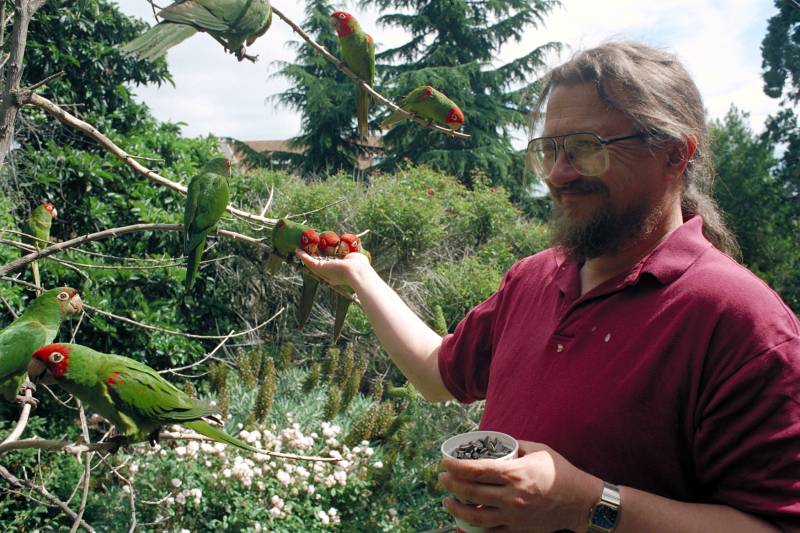It’s been two decades since Judy Irving produced, directed, filmed and edited her celebrated documentary The Wild Parrots of Telegraph Hill, a charming and contemplative film about one man’s relationship with a flock of wild parrots. So much has changed over those years, and yet the city she captured in 2003 is still familiar — a little softer around the edges then, with a lower skyline — and the story she tells remains a quintessential San Francisco story.
New Restoration of ‘The Wild Parrots of Telegraph Hill’ Flocks to Local Screens

Now, audiences new and old will get a chance to see the film restored in 4K. The Wild Parrots of Telegraph Hill screens Jan. 12–18 at the Roxie, Jan. 14 at the Smith Rafael Film Center and Feb. 3 at the Bolinas Community Center. Mark Bittner (the film’s human star) and Irving will be in person at many of the screenings.
The focus of this film is now the city’s “Official Animal” (thanks to a contest organized by the San Francisco Chronicle last year). But in the early 2000s, the flock of non-native cherry-headed conures of unknown origin was a bit more of a novelty. (An “Urban Legends” segment in the film delivers locals’ various theories, which include pet shops, an SFO breakout, a South American ship and annoyed roommates.)
At the heart of it all is Bittner, a sweet and gentle man who moved to San Francisco in search of a music career and spent 15 years on the streets, doing odd jobs and sleeping in odd places, before landing in a cottage in Telegraph Hill.
“I haven’t really paid rent in 25 years,” he says at one point. Irving’s presence in the film arrives in periodic voiceovers, asking the questions we all have after meeting Bittner: “How does he get away with that?”
“He has a lot of time,” she muses. Without a 9-to-5, without a schedule beyond his daily seed feedings of the flock, Bittner has the ability to truly focus on the things he loves. Namely, Mingus (a cherry-headed conure with a split personality), Connor (an isolated blue-crown conure) and Tupelo (a deteriorating cherry-headed conure he cradles on walks).
It’s Bittner’s deep understanding of the parrots’ relationships and his genuine connection to them that guide us through the film, which is ultimately about love, patience, acceptance and an unwillingness to worry about pretty much anything else. In the latter half of the film, we learn that Bittner must leave his home, and the birds, due to impending renovations. He accepts this too, fully knowing the wild parrots will continue their lives — and face the dangers of those lives — without him.
For those who have not yet seen the film, I won’t spoil its delightful surprise of an ending, but suffice to say: it will be an extra treat to attend one of the upcoming screenings with Irving and Bittman in attendance, to hear what they’ve been up to separately — and together — in the years since.

